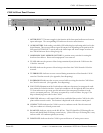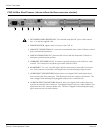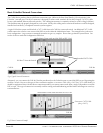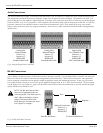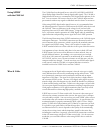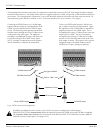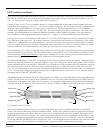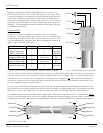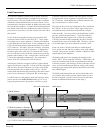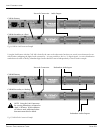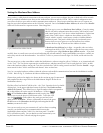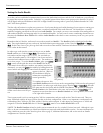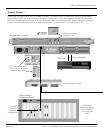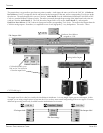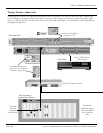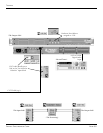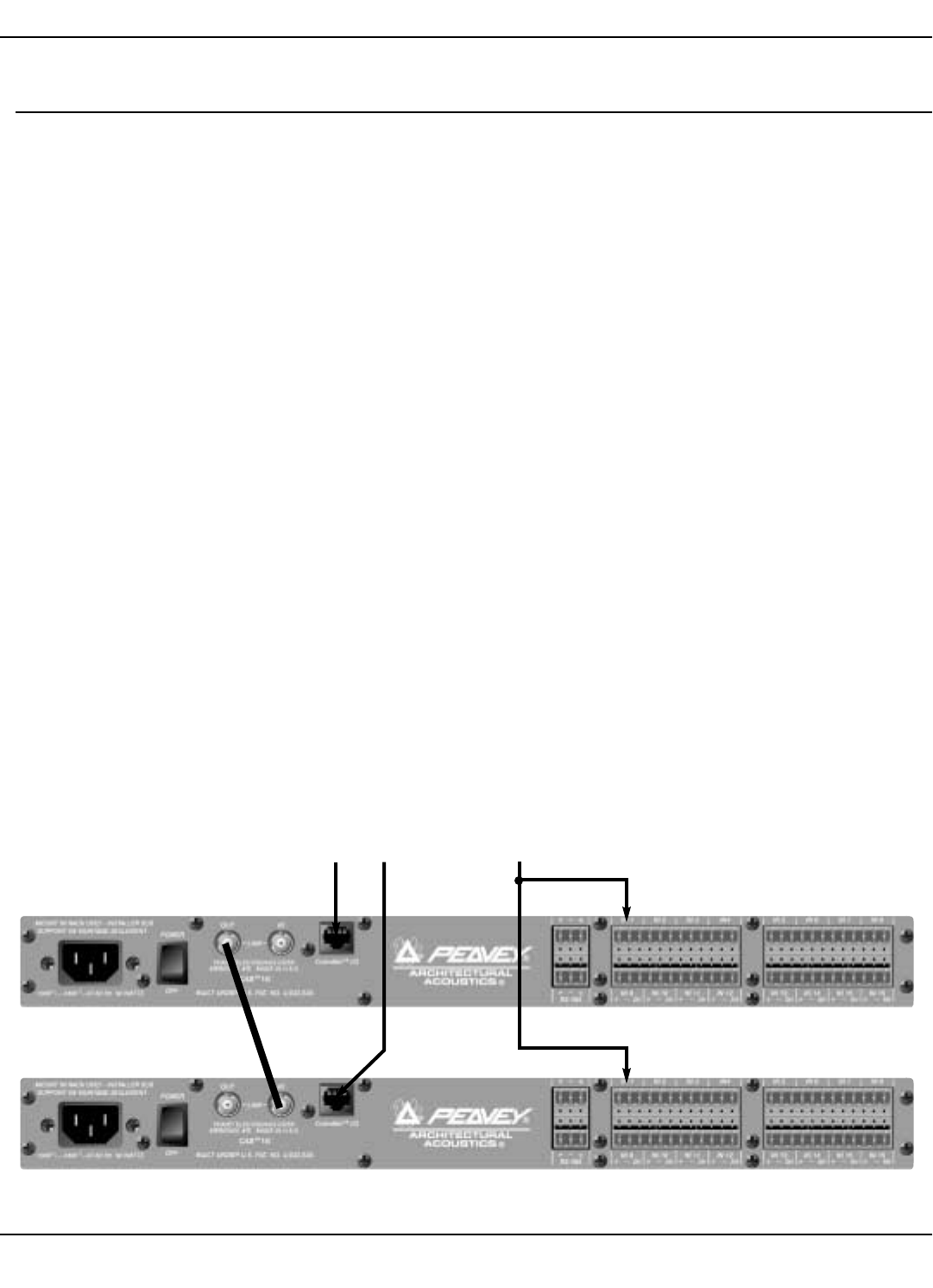
CAB
™
16 Series User Manual
Page 28 http://aa.peavey.com copyright 2000 All Rights Reserved
Link Connections
All CAB Series products feature built-in “Buddy Link” func-
tionality for creating backup I/O configurations in mission
critical systems. The term “Buddy Link” extends to multiple
dimensions within MediaMatrix, but in this context, we are
concerned only with how the built-in Buddy Link works with
the CAB 16 Series products. For more detailed information on
how Buddy Link works with MediaMatrix and/or CobraNet
™
,
please refer to our website, or to the resource list at the end of
this manual.
Each CAB 16 Series product features rear panel, dual BNC
connectors labeled LINK IN and LINK OUT. These connec-
tors enable you to connect adjacent, CAB units for redundan-
cy and define the role of dual units. In this configuration, one
CAB is declared the primary and transmits data via its LINK
OUT connector. The other CAB is the secondary, or backup,
and receives data at its LINK IN connector. A high quality,
broadcast grade video cable, RG-59 with male BNC connec-
tors on each end is used to make the connection between the
primary and secondary CABs. A single cable is used for dual
CABs in this redundant configuration. The connection is
always LINK OUT (Primary) to LINK IN (Slave).
Audio input (CAB 16i) or output (CAB 16o) signals should
appear at both units, in parallel, so if one fails, the redundant
unit will have the same connection. By nature of the Buddy
Link functionality, the secondary unit is always “off-line”
until needed and therefore the paralleling of the audio connec-
tions is of no consequence. (Exception 16d, see next page.)
For this feature to work properly, both units must be config-
ured to use the same Audio Bundle number (p. 30-31). As
long as the primary unit is powered on, and it sees a good
CobraNet connection (Ethernet link status good), and it has
not experienced a fault, it generates a signal from its LINK
OUT connector which inhibits the secondary unit from tak-
ing over until there is a failure or fault.
The action of the switch-over is different for the CAB 16i and
the CAB 16o. In the case of the CAB 16i, input audio is pres-
ent simultaneously at both units and both units will pass
audio internally. You can see this by the duplication of audio
presence on the front panel meters. To prevent confusion
from duplicated audio signals in the system, the secondary
CAB 16i is prevented from transmitting onto the CobraNet
network by the action of the Buddy Link. Therefore, only one
set of audio inputs is present within the system at a time.
In the case of the CAB 16o, both units are simultaneously
active on the network, but the secondary unit’s audio output
is muted. This prevents an audio “collision” of duplicate audio
output signals at the amplifiers.
The Buddy Link feature also monitors the integrity of the
LINK CABLE. When using dual CAB 16is, a cable failure will
cause the secondary unit to take over transmission onto the
CobraNet network. When using CAB 16os, both units will be
active, and will simultaneously generate analog audio output,
resulting in gain and possible spectral distortion in the result-
ing combined signal.
The Buddy Link functionality can also be placed under soft-
ware control and is used in systems where remote access to
the link is required. (See the resource list at the end of this
manual for additional information on this topic.)
Fig. 13, CAB 16i Link Connection Example
CAB 16i Primary
Audio InputNetwork Connection
CAB 16i Secondary or “Backup”



